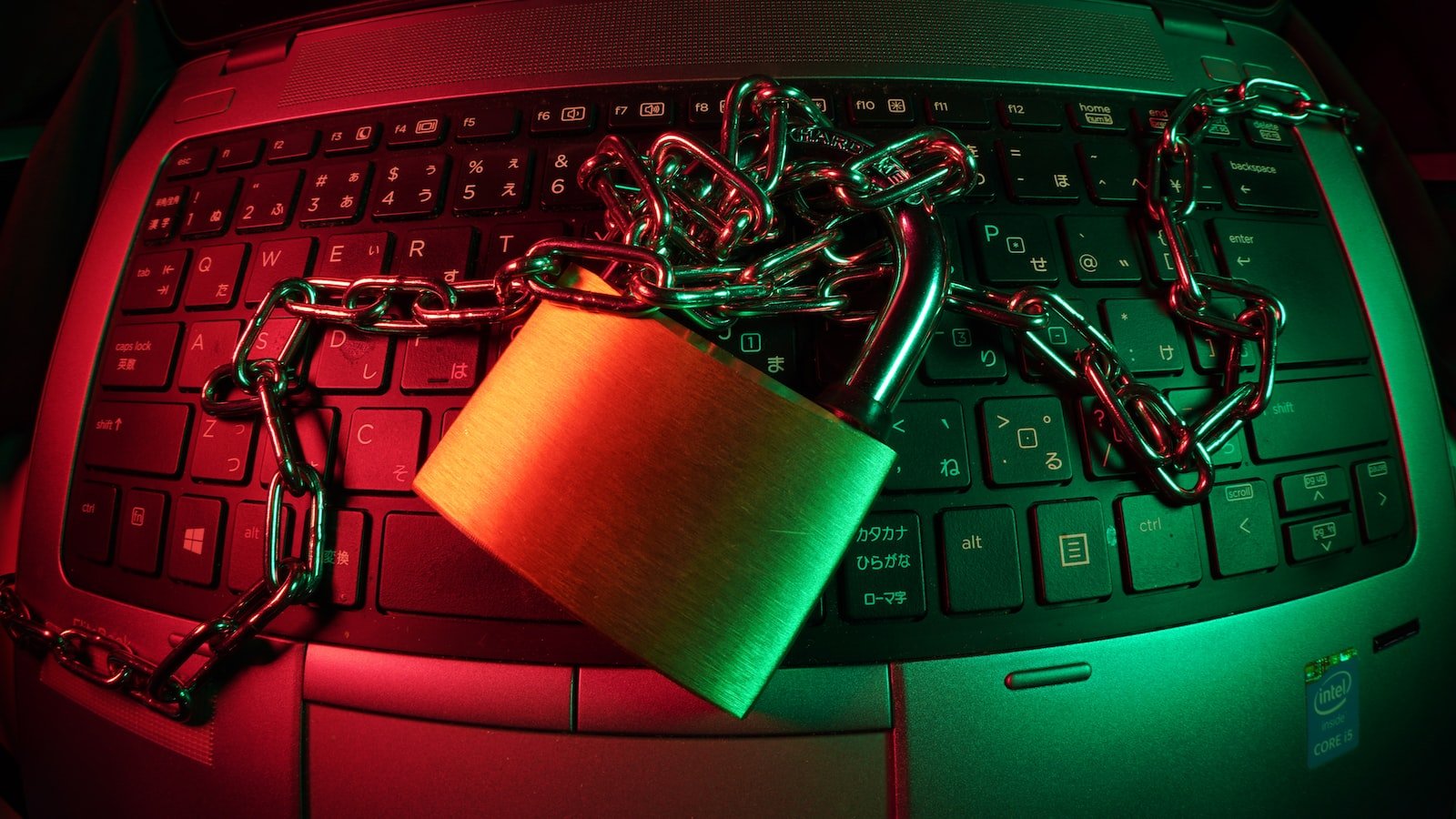Now Reading: Preparing for a Cyber Attack: Essential Tips
-
01
Preparing for a Cyber Attack: Essential Tips

Preparing for a Cyber Attack: Essential Tips
In an interconnected world where digital threats loom relentlessly, our reliance on technology has become a double-edged sword. A swift, surreptitious cyber attack can wreak havoc on governments, businesses, and individuals alike within a matter of seconds. From the crippling ransomware attacks to insidious data breaches, it is no longer a question of if, but when such a relentless assault will strike. As we navigate through this treacherous digital landscape, it is imperative to fortify our defenses and ready ourselves for the inevitable. This article presents a comprehensive guide, brimming with essential tips to help you prepare for the oncoming storm of a cyber attack, ensuring that you and your digital assets remain resilient in the face of adversity.
Table of Contents
- Understanding the Potential Impact: Assessing Vulnerabilities and Consequences
- Creating a Robust Defense Strategy: Fortify Your Cybersecurity Measures
- Developing an Incident Response Plan: Effective Steps to Mitigate Attacks
- Educating Employees: Strengthening the Human Firewall
- Monitoring and Regular Auditing: Ensuring Ongoing Protection
- Q&A
- Closing Remarks

Understanding the Potential Impact: Assessing Vulnerabilities and Consequences
When it comes to mitigating risks and ensuring the safety of individuals, organizations, and societies, understanding the potential impact is of utmost importance. By thoroughly assessing vulnerabilities and consequences, we can proactively identify areas that require attention and develop effective strategies to minimize risks.
Assessing Vulnerabilities:
- Identifying weak points or vulnerable areas within a system or structure.
- Evaluating the probability of threats or hazards exploiting these vulnerabilities.
- Considering factors such as infrastructure, technology, personnel, and policies that could potentially be targeted or compromised.
- Conducting comprehensive risk assessments to prioritize and address vulnerabilities.
Understanding Consequences:
- Analyzing the potential impact that risks and threats can have on individuals, communities, or critical systems.
- Evaluating the severity and extent of the consequences, including economic, social, and environmental impacts.
- Assessing the cascading effects that may arise from one vulnerability or threat triggering a chain of events.
- Developing contingency plans and response strategies to minimize negative consequences and facilitate rapid recovery.
In summary, by gaining a comprehensive understanding of vulnerabilities and consequences, we can better implement preventive measures and respond effectively to a wide range of risks and challenges. This proactive approach ensures the resilience and well-being of individuals and communities, as well as the continuity of critical systems in the face of potential threats.

Creating a Robust Defense Strategy: Fortify Your Cybersecurity Measures
When it comes to safeguarding your organization’s data and systems, it is crucial to have a robust defense strategy in place. Cybersecurity threats are ever-evolving, and staying one step ahead is essential for protecting against potential breaches.
Here are a few key components to consider when fortifying your cybersecurity measures:
- Implement Multi-Factor Authentication: Strengthen your access control by requiring multiple forms of authentication, such as passwords along with biometric scans or security tokens. This significantly reduces the risk of unauthorized access.
- Regularly Update and Patch Software: Keep all software up to date to minimize vulnerabilities. Outdated software often contains security flaws that can be exploited by cybercriminals. Regularly apply patches and security updates to close these gaps.
- Train Employees: Your workforce plays a crucial role in maintaining a strong defense against cyber threats. Regularly educate and train employees on best practices for identifying and responding to phishing emails, suspicious links, and other common attack vectors. Reinforce the importance of strong passwords and the necessity of reporting any suspicious activity.
By incorporating these elements into your cybersecurity strategy, you can significantly enhance your organization’s defenses against cyber threats. Remember, vigilance and ongoing refinement are key to adapting to the ever-changing cyber landscape.

Developing an Incident Response Plan: Effective Steps to Mitigate Attacks
Effective Steps to Mitigate Attacks
When it comes to developing an incident response plan, there are several effective steps you can take to mitigate attacks and protect your organization from potential threats. By implementing these measures, you can ensure a prompt and efficient response in the event of a security incident.
1. Assessing Risks: Start by conducting a thorough assessment of your organization’s vulnerabilities and potential threats. Identify your critical assets and analyze the likelihood and potential impact of various attack scenarios. This evaluation will help you prioritize your response efforts and allocate resources effectively.
2. Creating an Incident Response Team: Establishing a dedicated incident response team is crucial for an effective mitigation strategy. This team should consist of cross-functional members with expertise in different areas of cybersecurity. It is essential to define roles and responsibilities, establish clear communication channels, and ensure proper training and readiness.
3. Developing Incident Response Procedures: Documenting a comprehensive set of incident response procedures is pivotal for a cohesive and organized response. This includes defining the steps to be followed, such as incident detection, containment, eradication, and recovery. Develop a well-defined escalation process and ensure that all team members are familiar with these procedures through regular training and drills.
4. Implementing Monitoring and Detection Systems: Deploying robust monitoring and detection systems is essential for timely incident response. Implement intrusion detection systems, security information and event management (SIEM) solutions, and other advanced tools that can detect anomalies and suspicious activities. These systems will provide real-time alerts, allowing your incident response team to respond swiftly.
5. Regular Testing and Evaluation: Periodically testing and evaluating your incident response plan is necessary to identify gaps, enhance effectiveness, and ensure continuous improvement. Conduct simulated exercises and tabletop discussions to evaluate different scenarios and test your team’s ability to respond. Regularly update your plan to incorporate lessons learned from these exercises.
By following these effective steps, you can establish a robust incident response plan that minimizes the impact of attacks and enables your organization to quickly recover from security incidents.
Educating Employees: Strengthening the Human Firewall
When it comes to cybersecurity, organizations often focus solely on implementing robust technical measures to protect their networks and systems. However, it’s crucial to remember that employees play a significant role in safeguarding an organization’s digital assets. That’s why cybersecurity education and awareness programs are essential in strengthening what we call the “human firewall.”
Here are some key reasons why educating employees is vital in maintaining a robust cybersecurity posture:
- Recognizing threats: By providing thorough training, employees become better equipped to identify potential threats, such as phishing emails, suspicious attachments, or social engineering attempts.
- Cultivating good cybersecurity practices: Education empowers employees to adopt and maintain good cybersecurity practices – from creating strong passwords to regularly updating software and reporting potential security incidents.
- Reducing human error: Human error is often the weakest link in an organization’s security. Through education, employees can minimize unintentional errors that may lead to data breaches, ensuring better protection of sensitive information.
- Building a security-minded culture: By emphasizing the importance of cybersecurity, organizations foster a culture in which everyone is accountable for their actions, making security a top priority for all. This collaboration between employees and IT teams leads to a stronger defense against cyber threats.
Remember, the human element cannot be overlooked when it comes to cybersecurity. By investing in comprehensive education and training programs, organizations can create a knowledgeable and security-conscious workforce, ultimately strengthening their overall defense against evolving cyber threats.
Monitoring and Regular Auditing: Ensuring Ongoing Protection
Monitoring and regular auditing play a crucial role in maintaining ongoing protection for your business. By continuously monitoring your systems, networks, and processes, you can identify any potential vulnerabilities or weaknesses that may arise. This enables you to take proactive measures to address them before they turn into major security breaches.
To effectively monitor and audit your systems, consider implementing these best practices:
– Employ automated monitoring tools that can monitor your network traffic, identify any suspicious activities, and generate real-time alerts. These tools can help you stay ahead of potential threats and detect any abnormal behaviors that may indicate a security breach.
– Conduct regular security audits to evaluate the effectiveness of your security measures and protocols. This involves thoroughly reviewing your systems, procedures, and policies to identify any gaps or weaknesses. By identifying these areas of improvement, you can take the necessary steps to enhance your overall security posture.
– Establish a strong incident response plan to ensure that any security incidents are promptly addressed and resolved. This includes defining roles and responsibilities, establishing communication channels, and conducting regular drills to test the effectiveness of the plan.
By diligently monitoring and auditing your systems, you can mitigate potential risks and ensure the ongoing protection of your business. Remember, security is an ongoing process, and staying vigilant is critical in today’s rapidly evolving digital landscape.
Q&A
What is a cyber attack?
A cyber attack refers to any intentional exploitation of computer systems, networks, or digital devices, targeting them to gain unauthorized access, steal information, disrupt operations, or cause damage. It can be carried out by individuals, criminal organizations, or even nation-states.
Why should individuals and businesses be concerned about cyber attacks?
Cyber attacks can have severe consequences, leading to financial losses, intellectual property theft, reputational damage, and even legal implications. With an increasing reliance on technology, virtually anyone can become a target, making it vital for individuals and businesses to take preventative measures.
What are some essential tips to prepare for a cyber attack?
Firstly, regularly update software and operating systems, as older versions often have vulnerabilities. Implement strong, unique passwords for all accounts, use two-factor authentication, and regularly back up data. Additionally, educate employees or family members about phishing emails and the importance of keeping personal information secure.
How can organizations improve their cybersecurity measures?
Organizations should conduct regular risk assessments to identify potential vulnerabilities, and establish robust cybersecurity protocols. This includes installing firewalls, using encryption software, and regularly monitoring network traffic for any suspicious activities. Additionally, implementing employee training programs to enhance awareness and keeping up with cybersecurity news and best practices is crucial.
What should be done in case of a cyber attack?
In the event of a cyber attack, it’s important to remain calm and follow an incident response plan if one is in place. Isolate affected systems, contact relevant authorities, and involve an incident response team or cybersecurity professionals to contain and mitigate the attack. Afterward, conduct a thorough investigation to determine the cause and take necessary steps to prevent future attacks.
Closing Remarks
As we reach the end of this journey towards fortifying ourselves against the lurking shadows of cyber threats, it is crucial to remember that preparedness is a continuous process. Cyber attackers, like agile chameleons, always find new ways to test our defenses. Yet, armed with the knowledge and wisdom gained from this article, we stand ready to face any digital storm that may befall us.
Remember, a fortress is nothing without its vigilant defenders. Stay proactive and update your security protocols regularly. Cultivate a culture of cyber awareness among your team, for a united front is the most potent shield. Foster an open atmosphere that encourages reporting of any suspicious activities, no matter how inconspicuous they may seem.
And as we conclude this exploration, let us solemnly acknowledge the delicate balance between convenience and security. Embrace technological advancements, but not at the expense of your digital safety. It is crucial to find harmony between the digital realm and the safeguarding of our information.
While we cannot predict the future, armed with these essential tips, we can confidently face the unknown. Adaptability and resilience are key to surviving the digital battleground. Remember, it is not a matter of if, but when the storm arrives. Together, let us stand firm against the forces that seek to breach our digital sanctity.
Now, armed with this knowledge, go forth, fellow guardians of the digital realm! May your systems remain impenetrable, your data secure, and your resilience unwavering. Stay safe, stay informed, and may the winds of digital freedom always be at your back.
As an affiliate, my content may feature links to products I personally use and recommend. By taking action, like subscribing or making a purchase, you’ll be supporting my work and fueling my taco cravings at the same time. Win-win, right?
Want to read more? Check out our Affiliate Disclosure page.




